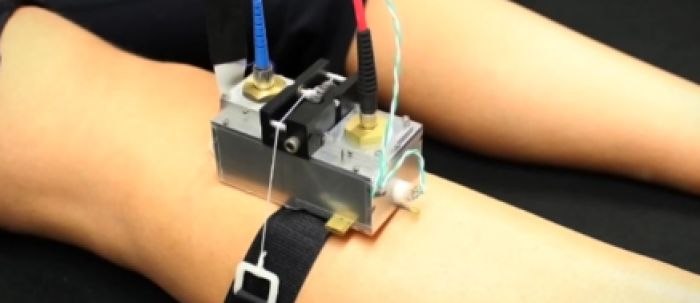 A new microscope could provide unique insights into treating muscular degenerative diseases.
A new microscope could provide unique insights into treating muscular degenerative diseases.
- Written by Stanford News
Stanford researchers develop microscope that allows first-ever look at live muscle units in action
FeaturedA new microscope could provide unique insights into treating muscular degenerative diseases. Stanford News reports on a collaboration of scientists in bioengineering, biology and applied physics which has developed a microscope that can visualize and measure the force-generating contractions of these patients' individual motor units.
Their paper in Neuron describes how Stanford professor of bioengineering Scott Delp and associate professor of biology and of applied physics Mark Schnitzer have developed a wearable microscope which straps to the human body and reveals the contractile dynamics of single force-generating motor units called "sarcomeres".
"When it comes to muscle microstructure and dynamics, we have not been able to visualize normal muscle, and we don't know how it changes with disease," said co-author Scott Delp, a Stanford professor of bioengineering, of mechanical engineering and, by courtesy, of orthopaedic surgery. "With this microscope, we have opened up a new window to how muscles change with strokes and diseases like ALS or muscular dystrophy. We can immediately use it in humans; it's very low risk, and it gives us a new way to examine muscle microstructure and dynamics."
Read the full article at Stanford News.
Visible Legacy Comment
This project builds on a previous project sponsored by the Coulter Foundation which yielded licensable technology posted on Stanford OTL TechFinder. Now that the microscope apparatus has been reduced in size it is clinically feasible for the first time. The team has spun out Zebra Medical Technologies to productize in-vivo tissue imaging and would be would be worth a look by industry Tech Scouts. The Delp group is called the Stanford Neuromuscular Biomechanics Lab and is collaborating in a variety of translational research projects. See the latest research from the ecosystem by exploring the map below!
updated 161002.1
Additional Info
-
Navigator:
 Explore the map in Navigator
Explore the map in Navigator - Widget:
- Caption: The Neuromuscular Biomechanics Lab draws on computational physics, neuromuscular biology, biomedical imaging, robotics, and neuroscience to analyze muscle form and function, study movement abnormalities, design medical technologies, and guide surgery.
Related items
- The future of health care is in our cells
- Federal funding will help WSU professor develop technology to recover rare earth elements
- Unlocking the brain: Peptide-guided nanoparticles deliver mRNA to neurons
- Scientists Get to the Bottom of COVID’s Worst Pediatric Complication
- WSU-inspired national gene-editing task force begins work
